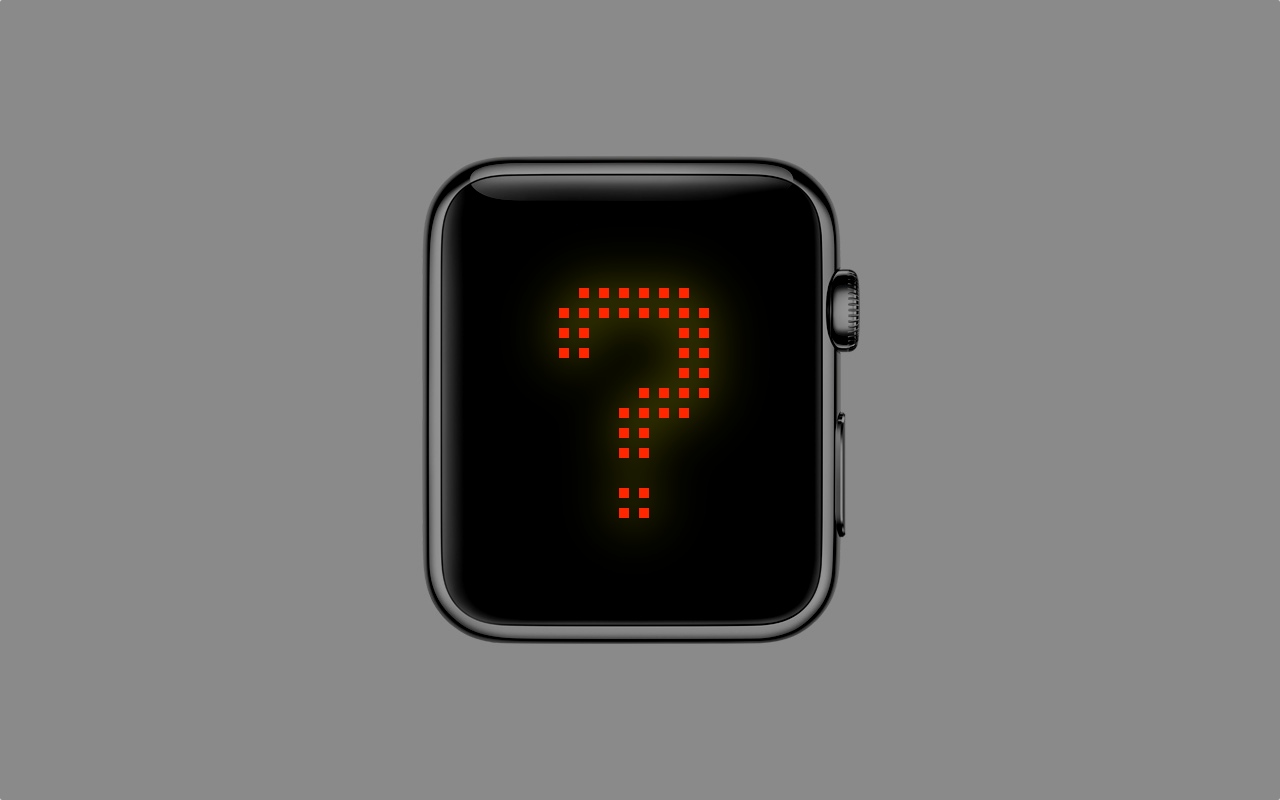
There Is No Killer Apple Watch Feature
One of the most pressing public queries about Apple Watch also happens to be the most asked: What’s it for? Answering that question is largely why we’re here in the first place, and it’s exceedingly difficult to come to any sort of consensus about the upcoming wearable’s number one killer feature. (I’d use the term “killer app,” but that plays a little bit of hell with Apple’s preferred lexicon, and we’ve got an entire other section devoted to the very best of those, of which there will be many.)
The easy answer — or, maybe, the easiest way to weasel out of producing one? — is that it all really depends upon whom you ask. If you ask me personally, the expected (and speculated) health monitoring aspect of Apple Watch is the most compelling reason to buy. By far. For me. Personally. I’m also the only one around the WatchAware offices to assign this much credence to that specific use case. Others answer otherwise. And nobody agrees. Some are strictly interested in Apple Watch as a basic, friction-reducing notifications hub. Others are wholly compelled by the impact of Apple’s Taptic Engine on the future of touch-based electronic communication. Still others see endless opportunity in Apple Watch as a universal remote for a world of automation. Heck, there even seem to be those who still put all their money on the basic, age-old selling power of status.
And they’re all correct.
But so is everyone else. If you think Apple Watch is pointless, you’re right. If you think it’s a glorified Fitbit, you’re right. If you think it’s to help you score style points in the club or the cubicle, you’re right. If you think it’s a real revolution in the evolution of the personal computer, you’re right.
The fact that Apple Watch’s killer feature depends on the individual might not be such an obvious evasion, after all. I’d argue that it’s not an evasion at all. Instead, it underscores a profound irony:
The lack of a killer feature is Apple Watch’s killer feature.
If that sounds lazy or trite or clichéd way beyond acceptable journalistic sensibility, just remember that I don’t care. But there’s plenty of precedent here, anyway: Before (and in the few months following) its 2007 launch, iPhone was met with similar vagueness in concept and vagaries of usage. In 2010, the pre-launch conception and post-launch reception of iPad followed iPhone’s trajectory exactly. And to this day, you still can’t tell me what either of those devices is actually for. You can only tell me what you do with yours. It’s personal.
In fact, “personal” was something of a buzzword in the Apple Watch press release:
Apple today unveiled Apple Watch—its most personal device ever…
which allows you to send
something as personal as your own heartbeat.
Tim Cook says,
“It’s the most personal product we’ve ever made.”
And Jony Ive says,
“We’ve created an entire range of products that enable unparalleled personalization.”
Because Apple Watch is
customizable for personal expression.
It will even be
personalized in appearance and capability…
and can
suggest personal, realistic goals, reward fitness milestones and keep you motivated.
And just in case you forgot, Cook and company remind you that
Apple designs Macs, the best personal computers in the world…
You get the idea.
Still, Apple does expect certain use cases out of a majority of users, and these are the ones they’ve been showing off since day one. You’re going to streamline your notifications because ignoring is bliss. You’re going to track your calories and check your heart rate. You’re going to play around with all the custom watch faces and purchase more the minute they’re available from third-party developers. You’re going to use the map functions in the bike lane or on the sidewalk. You’re going to see if Siri is actually any better than before. You’re going to buy a few different Bands to go with all your favorite outfits. You’re going to send Morse code LOLs to your date during terrible movies. You’re going to doodle crude representations of human reproductive organs to all your friends — in living color. You’re going to download apps (but probably not this many). And you’re going to have a completely different experience than every other person who’s doing exactly the same thing.
Truth be told, this seeming(ly false) dichotomy might be one of the most patently interesting things about the pre-launch hype surrounding Apple Watch. Electronics have always been consumed, at some level, on the premise of individuality, even as they’re invariably sold on the groupthink tenets of “Don’t be left behind!” You got a portable CD player, just like me. But we listened to different albums. You bought a Playstation, but I never liked fighting games, and you didn’t play platformers. We both had laptops for college, but your degree actually came with some earning potential. And we both use Safari for Mac, but you do not want to see my browser history. The technology — not the user, Android fans — is the tool, and Apple enthusiasts understand that. Apple itself understands that, which is why the company feels so compelled to beat everyone over the head with its ironic message of individuality-cum-conformity. But no matter its price point, the message is right on the money. It’s just bizarre to see the world’s largest technology company sell the most advanced piece of kit they ever made as anything other than the complex computing machine it is. And it’s even more bizarre that they don’t have to lie to do it.
Apple Watch is anything you want it to be.
I can’t wait to find out what mine becomes.